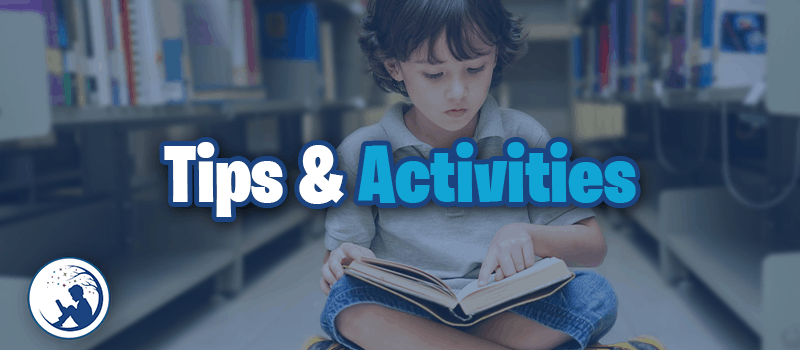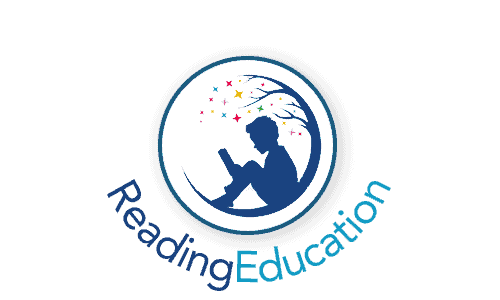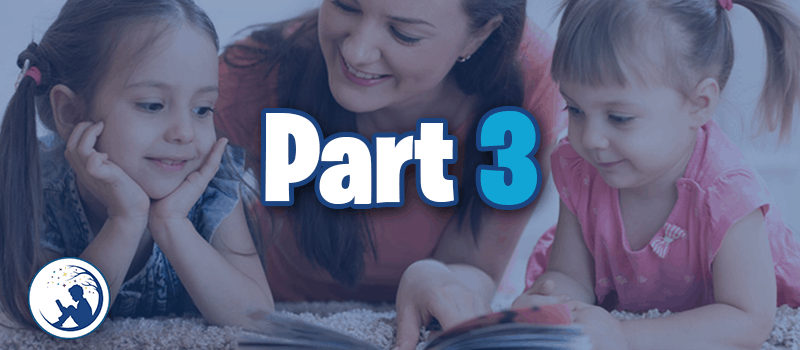Welcome to the third part of our ‘Teaching Your Child to Read Year-by-year’ series! In this set of articles, we’ll be looking at what your child will be learning at nursery or school and what you can do to further their reading skills at home. We’ll focus on eight age groups, which are as follows: Ages 3-4 years; ages 4-5 years, ages 5-6 years; ages 6-7; ages 7-8; ages 8-9; ages 9-10; ages 10-11. There will be one dedicated article for each age group, as well as links to all the other articles in this series to make navigation between articles as straightforward as possible (see the bottom of this page for links to other articles in this series).
Learning to Read: Children Aged 5-6 Years Old
By the time your child reaches the age of 5/6, they will have an expanding knowledge and understanding of phonics, in addition to accruing a range of reading skills. The primary focus is now on building their comprehension and phonics skills as they improve their confidence and fluency when reading.
What will they be learning at school?
In the first year at school, your child will be building a range of reading-based skills. Typically, this will include:
Decoding words using phonics. Your child will be taught to read written down words using phonics, which focus on creating words from sounds. Specific sounds might be represented by a cluster of letters (such as ‘igh’) or a single letter. Your child will be taught graphemes (letters) and the phonemes (the sounds they make), and how to combine the two to read simple words.
Blending sounds to create words. Continuation of learning focused on which letters are represented by which sounds. They will be taught how to ‘blend’ together individual letters and combine them to read the full word.
Reading and understanding words that have different endings. Your child will learn how to read words that they’re already able to decode, but with a suffix (an ending) added on. The suffix might turn the word into a plural or alter the tense. At this stage in their learning, your child will learn endings such as: -er, -est, -ing, -s, and -es. For example, ‘dogs’, ‘faster’, and ‘eating’.
Being introduced to words with contractions. Your child will learn about words with contractions, i.e. words that have one (or more) letters left out and replaced with an apostrophe, culminating in gaining the ability to read this type of word. For example, she’ll think instead of she will; I’ll instead of I will etc.
Reading out loud. By the ages of five and six, your child will have a solid understanding of phonics and how it works. They will also be able to recognise common exception or ‘tricky words’ (words that cannot be decoded using methods they have been taught previously as the words are not spelt in a way that can be worked out using phonics). Their teacher will use their current abilities to use phonics and ability to figure out common exception words to give them books at the right level for their individual ability.
Re-reading to enhance fluency and confidence. One of the most effective ways to improve both fluency and confidence is through re-reading. Your child will be asked to re-read books to enhance their current abilities and skills further.
Listening and talking about a range of books. By the ages of five and six, children are typically able to understand more complicated story and information books than they can read themselves. Your child will take part in activities that allow them to explore stories and texts. Examples of such activities include discussing the meaning of words; learning rhymes and poems by heart; learning about said poems and rhymes, and connecting what they have read to their own life experiences.
Learning well-known tales and stories. Well-known stories and traditional tales are taught to children aged five to six as it helps to develop comprehension. For the majority of children, the characters in these stories and tales will be familiar, so learning them shouldn’t pose too much difficulty.
Understanding books they read and listen to. Development of comprehension will typically revolve around:
– Explaining their understanding of what has been read to them (by either a teacher or parent).
– Making predictions as to what will happen next in a story.
– Discussing what has been read to them and also listening to others talk.
– Creating connections based on what has happened in a story.
– Checking they understand texts and stories as they read them and correcting any mistakes they make.
– Discussing what happened in a story and why the book has the title it does.
Reading Tips & Activities for 5-6 Year Olds

As your child gets older, the number of reading activities and games you can utilise starts to expand. Although the list below certainly isn’t definitive, it should give you a solid base of ideas from which to start.
1. Listen to Your Child Read
Any books that your child brings home with them should be the right level for their current ability. They are written to facilitate gradual progress and success, and will often include useful notes for parents inside both the front and back covers. If your child wants to re-read a book, let them! Reading a book more than once is actually very important for children as it allows them to read and hear words over and over again, which, ultimately, helps them remember those words. Furthermore, it also gives them a chance to notice things they may have missed during the first read, which may alter their perception or understanding of the story.
2. Read to Your Child
Reading to your child will help to develop crucial comprehension skills as well as providing a fun and enjoyable way to bond with them. Children will reap the rewards from having books read to them that they themselves are, as of yet, unable to read. Why is this so beneficial? Because they will hear and see language, words, and ideas that they may not have come across during independent reading. Where non-fiction is concerned, choose topics they’re interested; where fiction is concerned, choose longer stories that will really open their mind up to words, language, ideas and themes.
3. Always Make Time
There is no doubt that we live in a fast-paced world, where time is precious, and life is busy; however, regardless of what is going on, it is imperative that you make time to hear your child read on a daily basis – even if it is for just 10 or 15 minutes. Something as simple as listening to your child read is one of the most effective ways at boosting their comprehension, fluency and confidence.
4. Stuck? Use Phonics.
If your child is stuck on a word, always use phonics as the first port of call. To do this, get your child to say each individual letter sound, then ‘blend’ them together to hear the full word. If they are really struggling, it is often best to tell them that it is ok not to know and move on to the next sentence. However, if a book is at the correct level for them, this shouldn’t happen all that often.
5. Involve Them!
When reading with your child, always keep them actively involved with both the story and the words. Break longer words down into several pieces to help your child pronounce to them, (e.g. arg-u-ment) or show that some words are actually made up of two separate words joined together, e.g. dragon and then fly makes dragonfly. There are a wide array of ways to make reading a more interactive experience. Invite your child to join in with certain phrases, make sounds, or even do actions! This is great for their reading skills and a perfect time to bond with them.
6. Different Types of Books
Use as many different types of books as possible – both fiction and non-fiction. By utilising factual texts with fantasy stories, you help to broaden your child’s experience, keep them interested and keep the overall reading experience fresh. Mix it up when choosing the book and deciding who will read. Sometimes they’ll read, other times you’ll read…and maybe you’ll read together from time to time!
Thank you for taking the time to read our blog; we really appreciate your time and hope you found this article informative and helpful. If you’re interested in reading the other posts in the ‘Teaching Your Child To Read Year-By-Year’ series, please use the links below:
Part 1 (Ages 3-4)
Part 2 (Ages 4-5)
Part 4 (Ages 6-7)
Part 5 (Ages 7-8)
Part 6 (Ages 8-9)
Part 7 (Ages 9-10)
Part 8 (Ages 10-11)
Thanks again for your time! If you have any comments, questions, or suggestions, please don’t hesitate to get in touch!

